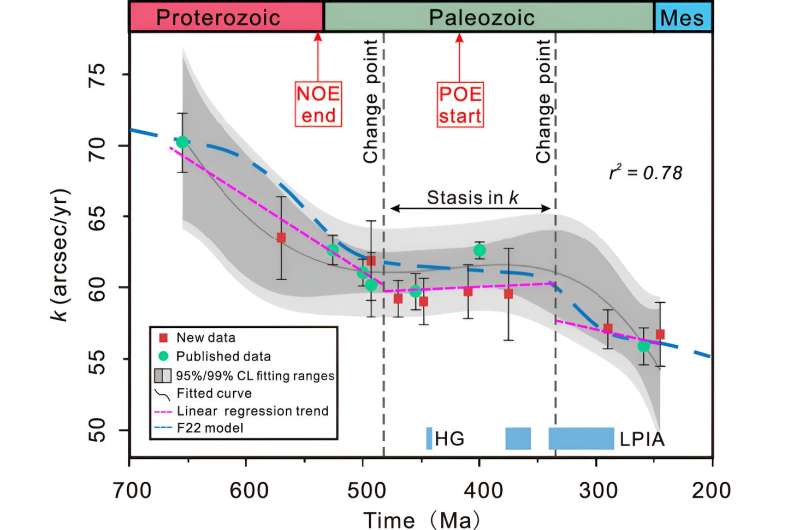In a new research paper, scientists have found that the slowing of the Earth’s rotation has been non-permanent over the past hundreds of millions of years. It rather resembled “steps”: periods of rapid decrease of days were followed by the time when this process was practically not noticeable.

Slowing of the Earth’s rotation occurred in “stages”
A team of geologists from several institutions has found evidence that the Earth’s rotation is slowing down in a stepwise manner, with two stable distinguishable periods. In their study, published in Proceedings of the National Academy of Sciences, a team of scientists analyzed data from sediment samples older than half a billion years.
Previous studies have shown that Earth’s axial rotation is decreasing mainly due to tidal dissipation, but as the researchers note, the rate of slowing was not constant on the charts. In this study, they attempted to accomplish this by looking back 650 million years.
The researchers analyzed eight geologic datasets collected over many decades. These sedimentary archives contain not only geographic history, but also evidence of the history of the Earth’s rotation. The datasets cover a period from 280 to 650 million years ago.

Relation of slowing periods to geologic events
Research shows that the Earth has experienced a series of decelerations followed by stability, resulting in a step principle. The researchers also found two notable stable periods, one coinciding with the Cambrian Explosion, which led to a significant increase in wildlife diversity, and the other with the best-known mass extinction. They suggest that the periods following these two slowdowns may have been more than coincidental.
The data also confirmed that, with the exception of the modern period when humans have disrupted the global environment, the slowdown was due to tidal dissipation — the dissipation of orbital and rotational energy as heat in the surface ocean, the planet’s interior, or the Moon. Tidal warming occurs when the Moon stretches and contracts as it approaches Earth.
The scientists also found that during the period studied, the Moon’s distance from Earth was about 20,000 kilometers greater than today, and Earth’s days were about 2.2 hours longer. The research team plans to continue its work looking for links between changes in Earth’s rotation and key environmental events.
According to phys.org


